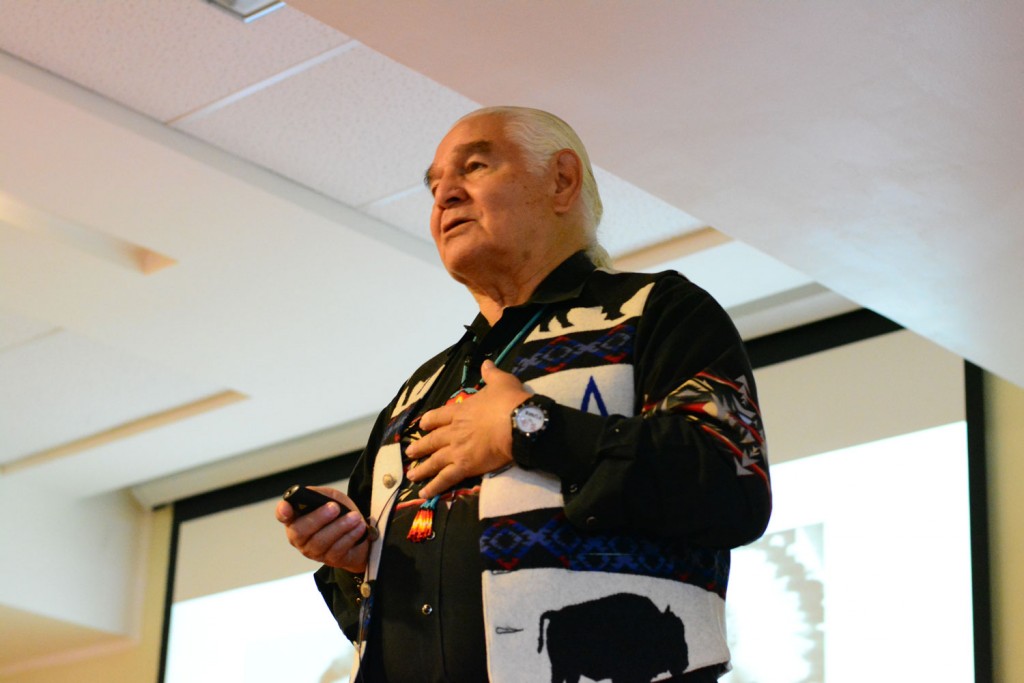At the Adventure Travel World Summit (ATWS) in Anchorage, Alaska, the ATTA is encouraging cross-cultural dialogue, especially when it comes to developing adventure tourism programs that rely on Indigenous communities. This includes promoting a half-day Indigenous Tourism Gathering hosted by the Alaska Native Heritage Center in Anchorage on Tuesday, September 20. The Gathering is open to Native Alaskan, Indigenous and other tourism operators, developers and leadership from around the world who are interested in sharing information at a round circle discussion on Indigenous tourism priorities.

Following the Gathering at the Alaska Native Heritage Center, there will be an open session on “Developing Partnerships with Indigenous Operators & Communities” at the Dena’ina Civic & Convention Center during the ATWS, where panelists from the United States and Canada will share real life examples of successful joint business ventures and partnerships as well as highlight current opportunities to help connect all those interested in working in genuine partnership with Tribal and Indigenous Tourism Operators and leadership. As an ‘open’ ATWS session, those involved in or interested in Alaskan Native / Indigenous Tourism who are not attending the Summit may attend this session by registering in advance.
In anticipation of these important conversations, ATTA talked to two of the organizers of the Indigenous Tourism Gathering: Ben Sherman, Chairman of the WINTA (World Indigenous Tourism Alliance) Leadership Council, and Rick MacLeod Farley, a consultant with more than 25 years of experience working with Indigenous and Native American communities.
ATTA: Is indigenous tourism considered a niche in the industry or is there a more inclusive way to see it?
MacLeod Farley: Indigenous tourism can appeal to various market interests including outdoor adventure, hard adventure, soft adventure, culture and heritage, ecological, ecotourism, culinary, you name it! From my vantage point, working with Indigenous operators and communities creates opportunities to develop richer adventures and more meaningful experiences – what I like to refer to as “deep tourism” -- that layers the core adventure experience (such as kayaking or hiking) with unique interpretive elements drawing from traditional Indigenous knowledge and oral traditions. The non-Indigenous operator can play a key role in connecting adventure tourism guests with Indigenous tourism partners and Indigenous guides.
Sherman: Many would consider Indigenous tourism as a niche in the larger industry, but we at the World Indigenous Tourism Alliance (WINTA) see our influence in a much larger scope when considering tourist visits to lands that are the aboriginal territories of Indigenous peoples. Adventure tourism takes place in landscapes that were once occupied by Indigenous populations. Indigenous peoples were the original stewards of large swaths of natural lands, but have since been confined to small landholdings because of invasion and colonization.
ATTA: Is there a specific kind of tour operator who should be reaching out to Indigenous communities or is it relevant across all of adventure travel?
MacLeod Farley: As a non-Indigenous person, I would say that in this modern day and age, every tour operator should be reaching out and trying to build relationships and partnerships with Indigenous communities, Indigenous tourism operators and Indigenous tourism guides and other workers. Realistically, most operators are touching down on the traditional territory of one or more Indigenous communities whether they know it or not (Traditional territory is bigger than the ‘dot on the map’ where people are based; it’s the full extent of the land used now and historically by the Indigenous community for hunting and gathering and other activities. There is a simple way to figure out traditional territory – just ask!). I would encourage all operators to do the research on this, find out whose territory you are on for various elements of your trips, and then look for opportunities to build relationships with the appropriate Indigenous tourism operators, guides and/or communities from that territory.
Sherman: WINTA's case for inclusion must be relevant across all sectors of adventure travel. We like to use the example of G Adventures and Planeterra as a partnership between a for-profit tourism business and a non-profit company that has institutionalized collaborative social good. Almost any adventure travel company can work toward similar social benefits. Its called “doing well by doing good.” Other examples exist around the world.
ATTA: What is the most important thing that Indigenous communities want to communicate to non-Indigenous visitors?
Sherman: The most important issue for Indigenous communities is the fair and equitable restoration of our human and land rights. WINTA wants to have a place at the table where decisions are made that affect our Indigenous peoples' well-being. WINTA desires to have full consent and benefit-sharing for all decisions affecting our aboriginal territories, both land and water.
ATTA: How will you define success at the Indigenous Tourism Gathering in Alaska?
MacLeod Farley: Building actual partnerships and taking concrete actions are the key opportunities on hand. Let’s move beyond talk, and proceed to action. If nothing else, I hope that all the delegates learn and start to genuinely connect with organizations like WINTA, AIANTA, ATAC and others, as a stepping stone towards building genuine partnerships with Indigenous tourism operators and communities.
Free registration is required for the Indigenous Tourism Gathering and the Open ATWS Session as well as an optional 1-hour workshop on “Securing Financial Partnerships for Your Indigenous Tourism Project” delivered the same day by Rick MacLeod Farley.
